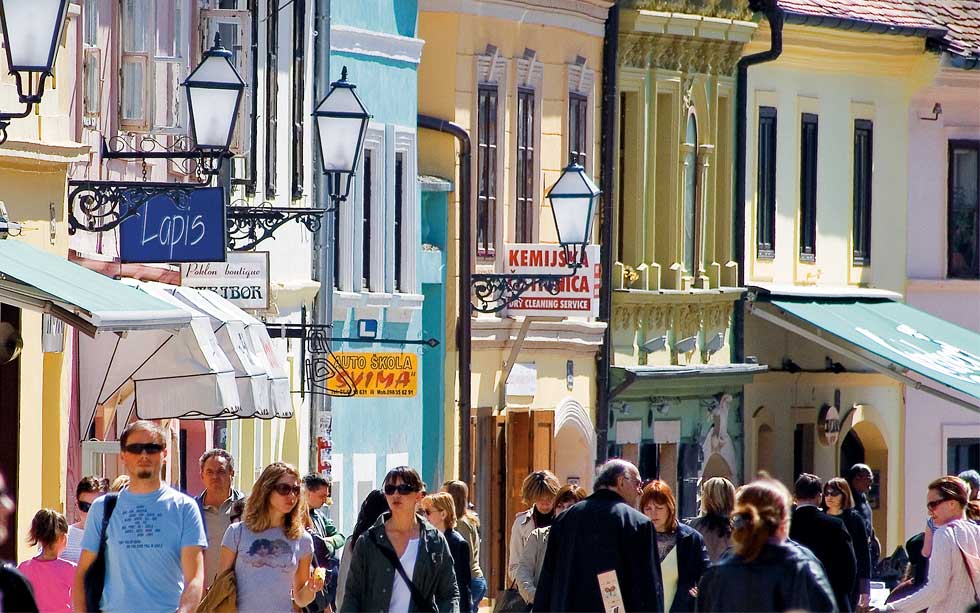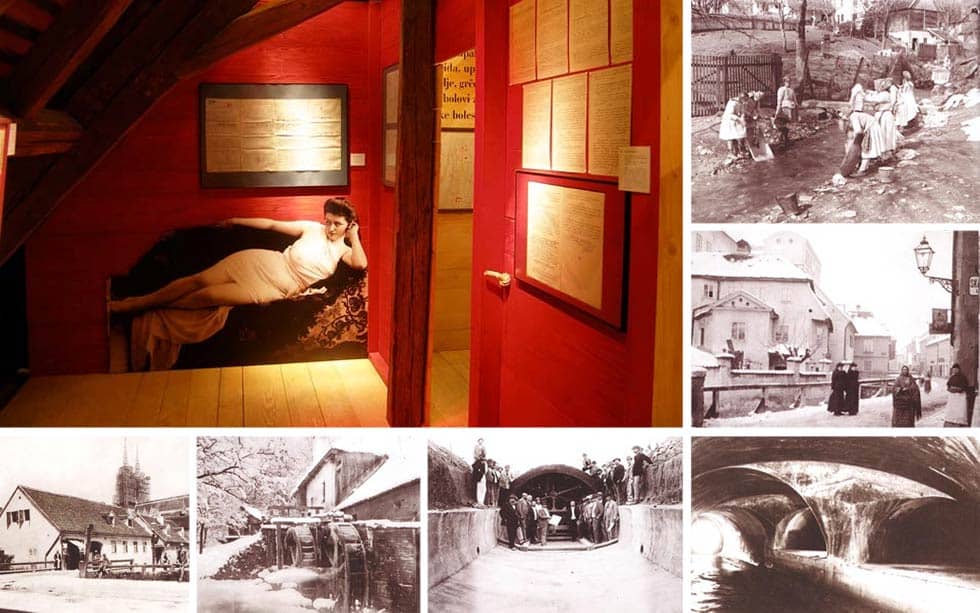The colourful city street in the very heart of the city centre was created in the valley between the two oldest Zagreb settlements of Gradec and Kaptol.
History
Back in the Middle Ages, on the place of the today's Tkalčićeva street was a stream that flowed trough a valley dividing the two oldest Zagreb settlements - Gradec and Kaptol. All surrounding landowners erected mills around the stream, which were for years the reason of various disputes between the settlements - they fought over water use and further construction itself. Although there are no written recordings of victims in these fights, many noses, heads and arms were broken with the river turning red because of the blood, which lead to the name "Bloody bridge" for the one connecting the two lands (today there's still a passage bearing that name - "Krvavi most").
The lower station is located on Tomićeva Street, while the other station is located at the base of Lotršćak Tower. It was opened in 1890 after just 2 years from getting the building permit. No everything went smooth though, it went through difficult times for a year - temporary halts where passengers had to push the wagons it to make them move at all.
Old Zagreb Private Tour
Discover the history, culture, and modern way of life of Zagreb, the capital of Croatia, on this two-hour introduction tour.
With a leisurely pace, you'll explore the medieval precursors of Zagreb, Gradec and Kaptol, as well as all the essential sights of the city, including Ban Jelačić Square, Stone Gate, St. Mark's Church, Lotrščak Tower, and Zagreb Cathedral, among many others. Along the way, your knowledgeable guide will provide recommendations for places to visit during your free time, ensuring that you have an informative and enjoyable experience.
Zagreb Highlights Bike Tour
Join a private bike tour led by your own guide and explore the ancient city of Zagreb at your own pace.
Perfect for those who want to avoid large tour groups, this experience covers the highlights and history of Zagreb's Upper and Lower Towns, with as many stops as you desire. Discover the stories behind the Bloody Bridge and Stone Gate, and receive recommendations for the best beer or brandy in town.

The constructed mills covered the need for flour all over Zagreb until the second half of the XIX. century when driven by progress, many manufactures opened in the vicinity in order to use the stream (soap makers, paper, liquor...) and a leather factory which later grew into the largest plant of that area. Due to contamination of the stream by all the shops around a need raised for one of the largest community-based projects - the construction of the city sewage system.
This lead to the largest community-based project for the time - the construction of the sewage of the city. The stream was vaulted and diverted and all the bridges were demolished by 1899 - forming the first street, "Potok" (Croatian for stream).
What about fun in those days?
In the period from 1899 to 1941 almost every house in Tkalciceva street was a brothel. With the official brothel ordinance issued in 1899., Zagreb had 46 /professional/ prostitutes. Since the street was in the city centre, all windows had to have opaque glass and red lanterns at the door. Zagreb was the first city in Europe with that sort of rules. Ha! Guess Zagreb had a proper red light district before the most famous one, De Wallen in Amsterdam!

Working Hours
Open 24 hours
Features
Filled with traditional shops, restaurants and cafes
Address & contact details
Street: Ul. Ivana Tkalčića
Postcode: 10000
City: Zagreb
Where to stay in Zagreb
Our top picks for where to stay in Zagreb.